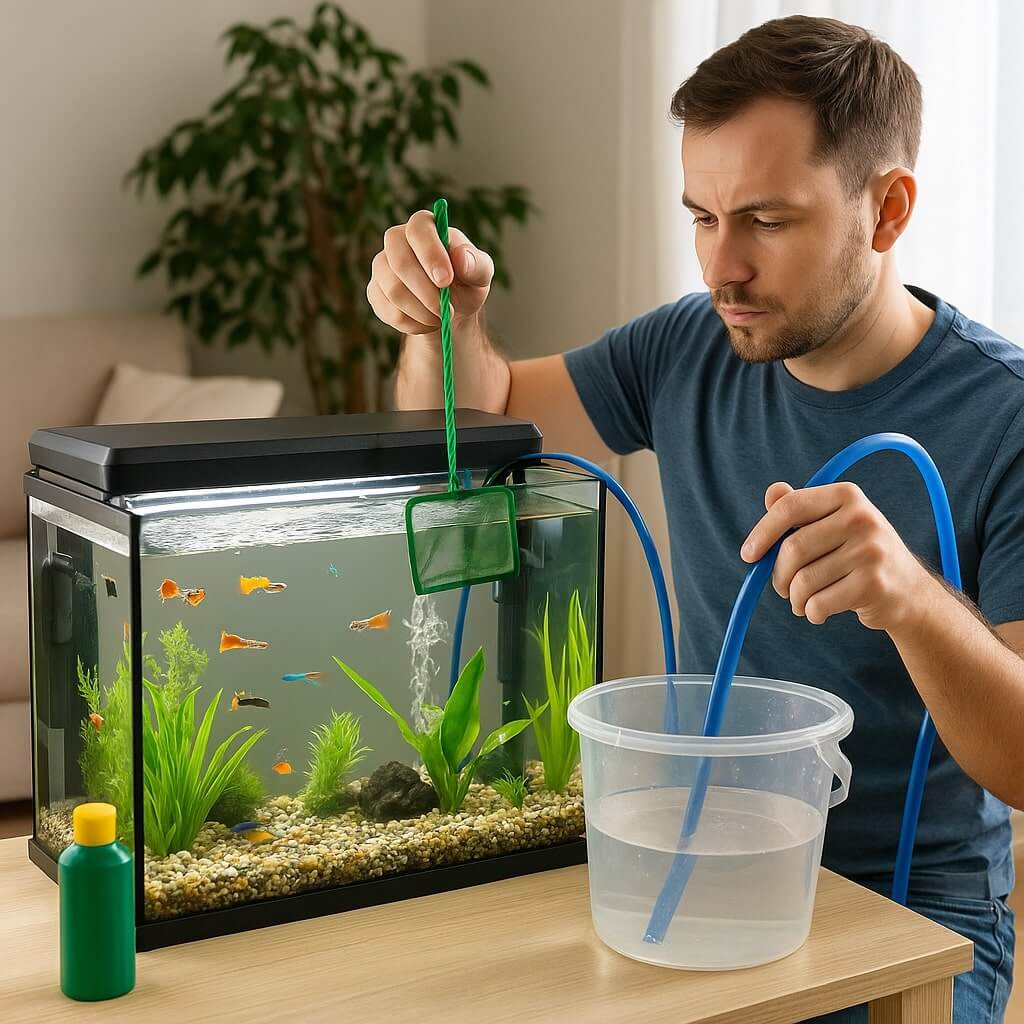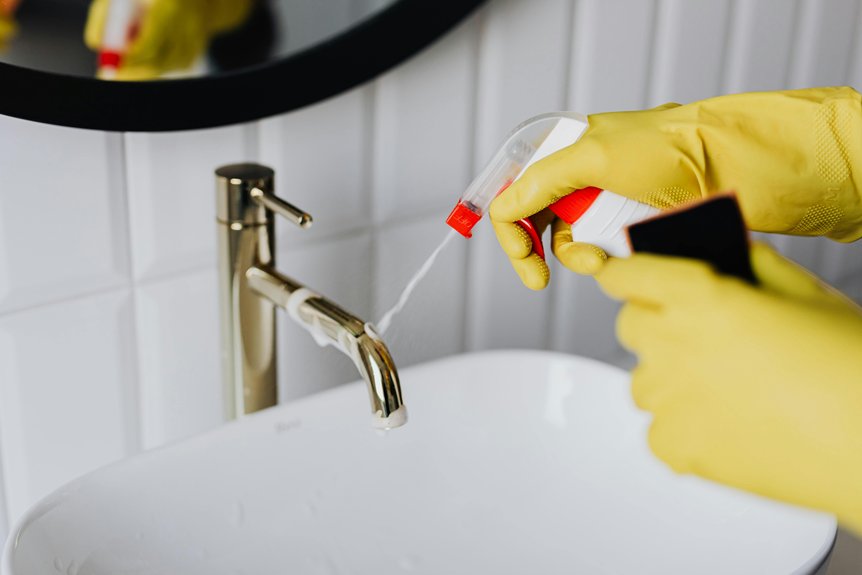Maintaining a home aquarium isn’t just about filling it with water and fish; it requires attention and care. Regular water changes, monitoring parameters, and ensuring proper filtration are vital for a thriving ecosystem. Neglecting these elements can lead to problems that affect your aquatic life. By focusing on these essential tips, you can create a vibrant underwater world. So, what are the best practices to implement? Let’s explore each one in detail.
Key Takeaways
- Perform regular water changes of 10-20% weekly to maintain water quality and fish health.
- Monitor water parameters, including pH and nitrate levels, to prevent health issues.
- Choose and maintain the right filter type for your tank size and fish species.
- Enhance aeration using air stones or proper water movement for oxygen exchange.
- Develop a consistent maintenance routine to ensure a thriving aquatic environment.
Regular Water Changes
While it might seem tedious at times, performing regular water changes is essential for maintaining a healthy home aquarium.
Freshwater helps to dilute harmful toxins, stabilize water chemistry, and guarantee your fish thrive. When you neglect these changes, you risk fluctuating parameters, leading to stress and illness in your aquatic pets.
Regular water changes are vital to dilute toxins and maintain stable conditions, ensuring your fish remain healthy and stress-free.
By replacing 10-20% of the water weekly, you promote better fish health and create an inviting environment. Pay attention to your aquarium’s specific needs; each tank is unique.
Ultimately, consistent water changes not only enhance water quality but also deepen your connection to your vibrant underwater ecosystem.
Monitor Water Parameters
To guarantee your aquarium thrives, you must regularly monitor water parameters, since even small fluctuations can have significant effects on your fish and plants.
Start with pH levels; ideal levels typically range from 6.5 to 7.5, but it varies by species. Test frequently and adjust gradually to avoid stressing your aquatic life.
Nitrate control is equally vital, as high nitrate levels can lead to poor health and algae blooms. Aim to keep nitrates below 20 ppm.
Use test kits and maintain a log to track changes. Proactive monitoring guarantees a balanced environment, promoting vibrant, thriving aquatic inhabitants.
Maintain Proper Filtration and Aeration
Proper filtration and aeration are essential for creating a healthy environment for your aquarium’s inhabitants.
You should choose the right filter types, like canister, hang-on-back, or sponge filters, tailored to your tank size and fish species. Regularly clean and replace filter media to maintain efficiency.
For aeration techniques, consider using air stones or surface agitation to enhance oxygen exchange. Position your filter outlet to create water movement, ensuring all areas of your tank receive adequate circulation.
Conclusion
By following these three essential tips—regular water changes, monitoring water parameters, and maintaining proper filtration and aeration—you’re setting the stage for a vibrant, thriving aquarium. Your commitment to consistency will not only enhance the health of your aquatic life but also deepen your connection to this enchanting underwater world. Immerse yourself in this rewarding journey and watch your aquarium flourish, creating a stunning display that brings joy and tranquility to your home. Happy fishkeeping!




